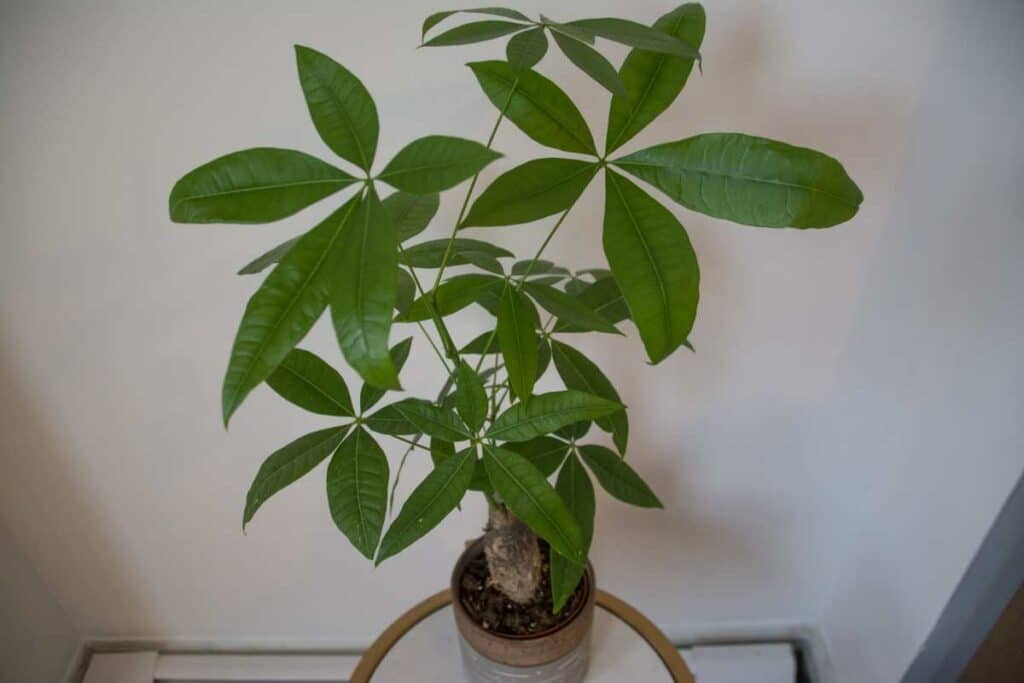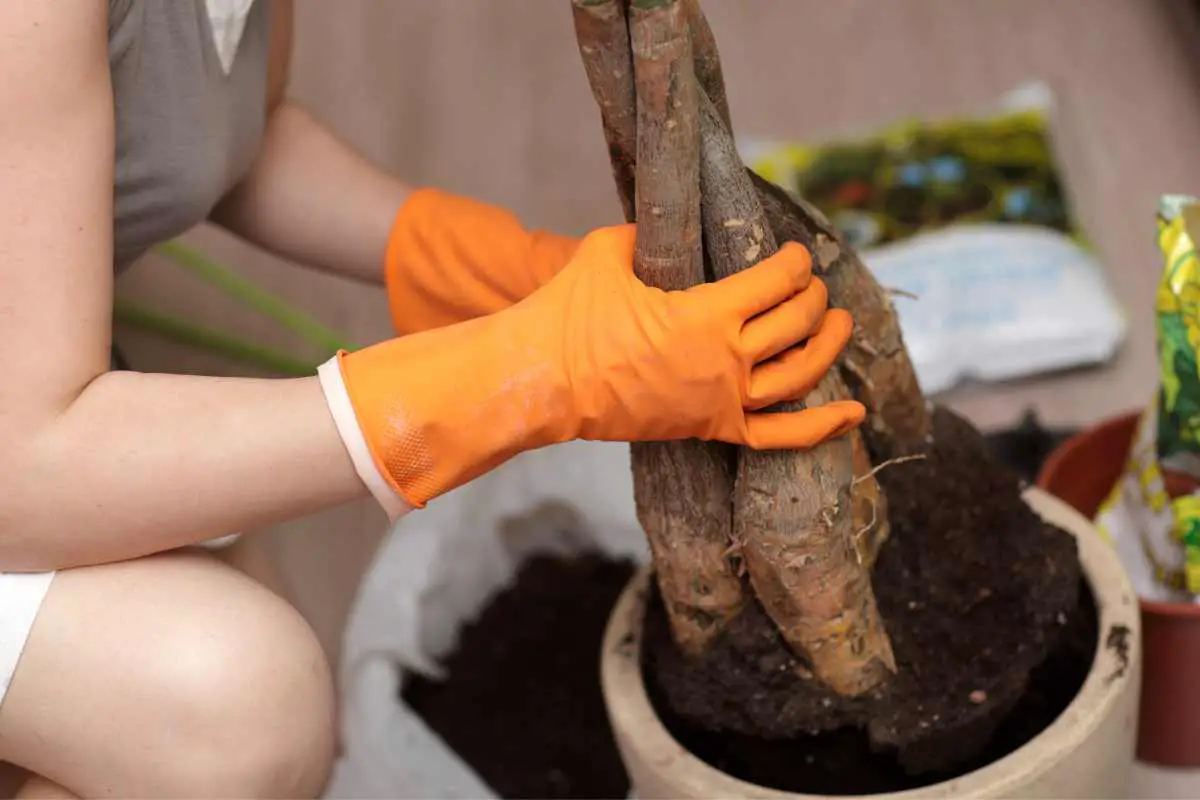You wake up one fine day to check on your beloved money tree, and what do you see?
The plant has lost many of its leaves, leaving you worried and wondering what went wrong.
Did you water it too much or too little? Did you expose it to too much sun or too little? Did the plant catch some pest infestation?
The reasons can be endless, and it can be frustrating not to know what caused your money tree to shed all its leaves.
But the question remains, “Money Tree Lost All Leaves. Will They Grow Back?”
Fear not; we have the answers you seek in detail below
But first, let’s reassure you…
Yes, a money tree can recover from losing all its leaves if the cause of the leaf loss is identified and treated promptly.
This article will cover the possible reasons why your money tree is losing its leaves, ways to revive it, and tips to prevent it from happening again.
Reasons Why Money Tree Lost All Leaves
Several factors can cause your money tree to lose its leaves, some of which include:
- Overwatering or Underwatering: Your money tree needs a balance of moisture in the soil. Overwatering can lead to root rot, while underwatering can lead to dehydration, causing the plant to lose its leaves.
- Excessive Sunlight or Low Light: The money tree thrives in indirect sunlight. However, too much sun exposure can cause its leaves to scorch, leading to leaf drop. On the other hand, inadequate light can stunt the plant’s growth, leading to leaf loss.
- Pest Infestation: Mites, mealybugs, scale, and aphids are common pests that attack money trees. If left untreated, they can cause significant damage to the plant, including leaf loss.
- Root Bound: If your money tree has outgrown its current pot, the roots might be bound and need more space to grow. A bound root system can lead to a lack of nutrients and oxygen to the plant, causing leaf loss.
Ways to Revive Money Tree
Reviving a money tree that has lost all its leaves can be challenging, but it’s not impossible. Here are some ways you can revive your money tree:
- Assess the Damage: Identify the cause of the leaf loss and see if the plant is still alive. Check the stems and branches for any signs of life, such as green color or pliability. If the plant is still alive, move on to the next steps.
- Adjust Watering: If the root rot caused the leaf loss, check the soil’s moisture level and adjust watering accordingly. If it’s dry, give it a good soak, and if it’s wet, allow it to dry out before watering again.
- Change the Light Exposure: If the money tree was exposed to too much sun or low light, move it to a location that provides the ideal lighting conditions. A spot with indirect sunlight for at least six hours a day should suffice.
- Treat Pest Infestation: Use a mild insecticidal soap to remove any pests from the plant. Follow the instructions carefully and avoid spraying during the hottest part of the day.
- Repot the Plant: If the root-bound caused the leaf loss, repot the plant in a pot that is one size larger than the previous one. Use fresh soil and ensure proper drainage.
- Be Patient: Reviving a money tree takes time, and you might not see any significant changes for a few weeks. Be patient and continue caring for the plant until you see signs of new growth.

Preventing Future Leaf Loss
Preventing future leaf loss in your money tree involves providing it with optimal growing conditions. Here are some tips to keep your money tree healthy and thriving:
- Watering: Always check the soil’s moisture level before watering your money tree. Water it thoroughly when the top inch of soil feels dry to the touch. Ensure that the pot has proper drainage to prevent root rot.
- Lighting: Place your money tree in a location with bright, indirect sunlight. Avoid exposing it to direct sunlight or low light conditions.
- Fertilizing: Feed your money tree with a balanced fertilizer once a month during the growing season. Follow the manufacturer’s instructions for the proper dosage.
- Repotting: Repot your money tree every two to three years to prevent it from becoming root-bound. Choose a pot that is one size larger than the previous one and use fresh soil.
- Pest Control: Inspect your money tree regularly for signs of pest infestation, such as sticky leaves or webbing. Use a mild insecticidal soap to remove any pests and follow the instructions carefully.
- Humidity: Money trees thrive in a humid environment, so consider using a humidifier or placing a tray of water near the plant to increase humidity levels.
FAQs
Can a money tree recover from losing all its leaves?
How long does it take for a money tree to grow back its leaves?
Why is my money tree dropping its leaves?
How do I know if my money tree is dying or just dormant?
How much sunlight does a money tree need to avoid dying?
How long does it take for a money tree to die if it’s not cared for properly?
Is it possible to over-fertilize a money tree and cause it to die?
Conclusion
In conclusion, if your money tree lost all its leaves, it’s not the end of the world. With the right care and attention, your money tree can bounce back and thrive once again.
Identifying the cause of the leaf loss is crucial to treating the plant and preventing it from happening again.
Remember to provide your money tree with optimal growing conditions and be patient as it recovers. With these tips, you can revive your money tree and enjoy its beauty for years to come.
- Philodendron Care, Varieties, And Aesthetic Home Arrangements
- Best House Plants for Low Light – Thriving Indoors with Minimal Sunlight
- 15 Air-Purifying Houseplants That Release The Most Oxygen
- Purple Houseplants: Your Guide to Dramatic Indoor Beauty
- Philodendron Moonlight Vs. Golden Goddess
- How to Revive Your Rubber Plant: 6 Tips to Help Your Rubber Tree Thrive Again






